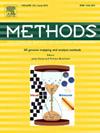基于病理的结直肠癌免疫治疗反应预测模型的发展和解释。
IF 4.3
3区 生物学
Q1 BIOCHEMICAL RESEARCH METHODS
引用次数: 0
摘要
结直肠癌(CRC)是全球第三大最常见的恶性肿瘤,也是癌症相关死亡的第二大原因,其5年生存率低于20% %。免疫治疗,特别是基于免疫检查点阻断(ICB)的治疗,已成为结直肠癌治疗的重要途径。然而,只有特定的患者亚群显示出显著的临床益处。尽管TIDE算法可以预测免疫治疗反应,但对转录组测序数据的依赖限制了其临床适用性。人工智能和计算病理学的最新进展为医学图像分析提供了新的途径。在本研究中,我们使用TIDE算法将TCGA-CRC样本分为免疫治疗应答组和无应答组。此外,构建了基于卷积神经网络的病理模型,直接预测组织病理图像的免疫治疗反应。单细胞分析显示成纤维细胞可能通过胶原- cd44和ITGA1 + ITGB1信号轴诱导结直肠癌免疫治疗耐药。所建立的病理模型在测试集中表现出优异的分类性能,在贴片水平上的AUC为0.88,在患者水平上的AUC为0.85。此外,通过SHAP分析确定了关键的病理特征。这一创新的预测工具为CRC免疫治疗的临床决策提供了一种新的方法,具有优化治疗策略和推进精准医学的潜力。本文章由计算机程序翻译,如有差异,请以英文原文为准。
Development and interpretation of a pathomics-based model for the prediction of immune therapy response in colorectal cancer
Colorectal cancer (CRC) is the third most common malignancy and the second leading cause of cancer-related deaths worldwide, with a 5-year survival rate below 20 %. Immunotherapy, particularly immune checkpoint blockade (ICB)-based therapies, has become an important approach for CRC treatment. However, only specific patient subsets demonstrate significant clinical benefits. Although the TIDE algorithm can predict immunotherapy responses, the reliance on transcriptome sequencing data limits its clinical applicability. Recent advances in artificial intelligence and computational pathology provide new avenues for medical image analysis. In this study, we classified TCGA-CRC samples into immunotherapy responder and non-responder groups using the TIDE algorithm. Further, a pathomics model based on convolutional neural networks was constructed to directly predict immunotherapy responses from histopathological images. Single-cell analysis revealed that fibroblasts may induce immunotherapy resistance in CRC through collagen-CD44 and ITGA1 + ITGB1 signaling axes. The developed pathomics model demonstrated excellent classification performance in the test set, with an AUC of 0.88 at the patch level and 0.85 at the patient level. Moreover, key pathomics features were identified through SHAP analysis. This innovative predictive tool provides a novel method for clinical decision-making in CRC immunotherapy, with potential to optimize treatment strategies and advance precision medicine.
求助全文
通过发布文献求助,成功后即可免费获取论文全文。
去求助
来源期刊

Methods
生物-生化研究方法
CiteScore
9.80
自引率
2.10%
发文量
222
审稿时长
11.3 weeks
期刊介绍:
Methods focuses on rapidly developing techniques in the experimental biological and medical sciences.
Each topical issue, organized by a guest editor who is an expert in the area covered, consists solely of invited quality articles by specialist authors, many of them reviews. Issues are devoted to specific technical approaches with emphasis on clear detailed descriptions of protocols that allow them to be reproduced easily. The background information provided enables researchers to understand the principles underlying the methods; other helpful sections include comparisons of alternative methods giving the advantages and disadvantages of particular methods, guidance on avoiding potential pitfalls, and suggestions for troubleshooting.
 求助内容:
求助内容: 应助结果提醒方式:
应助结果提醒方式:


